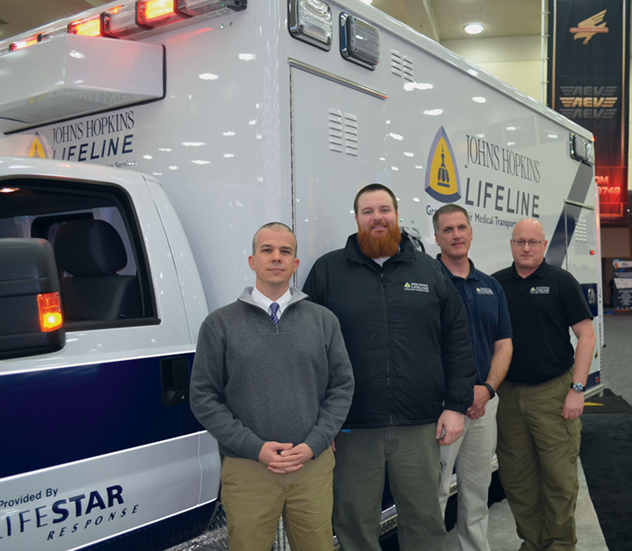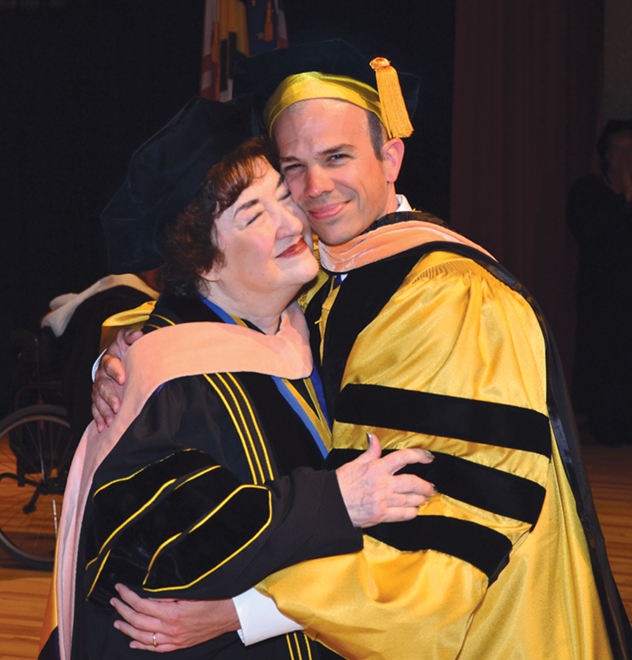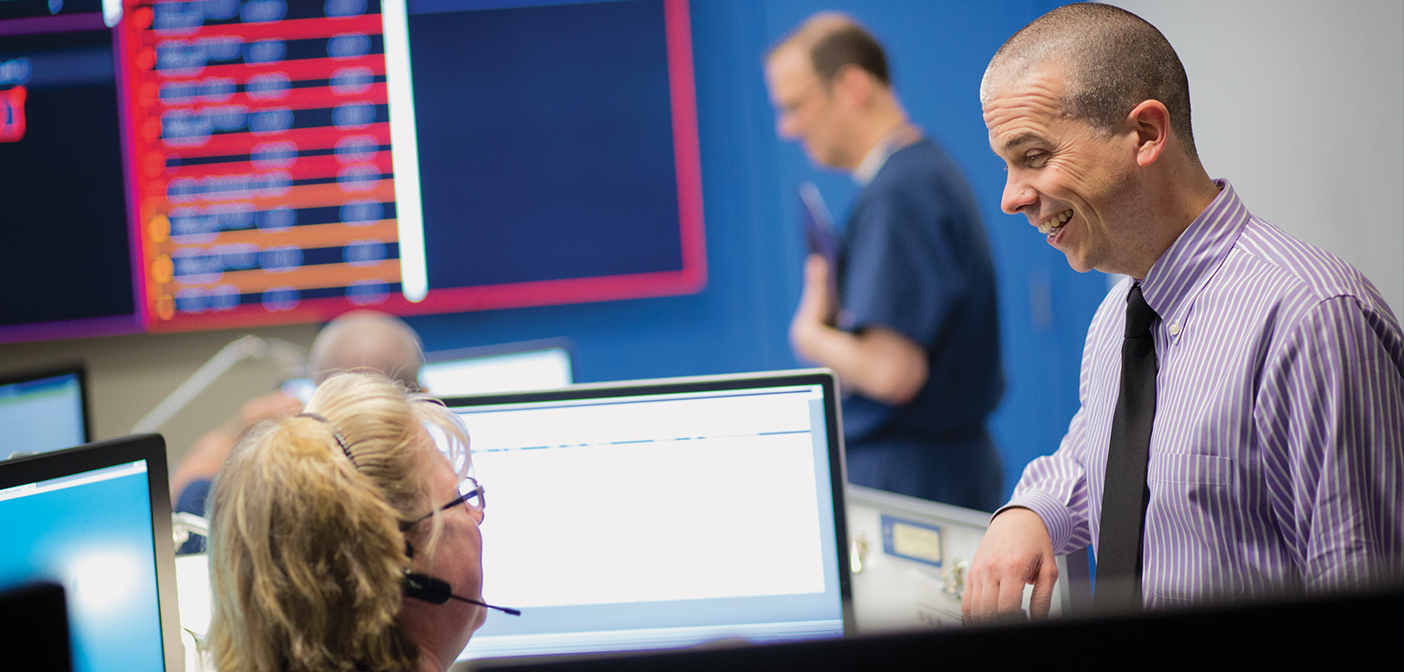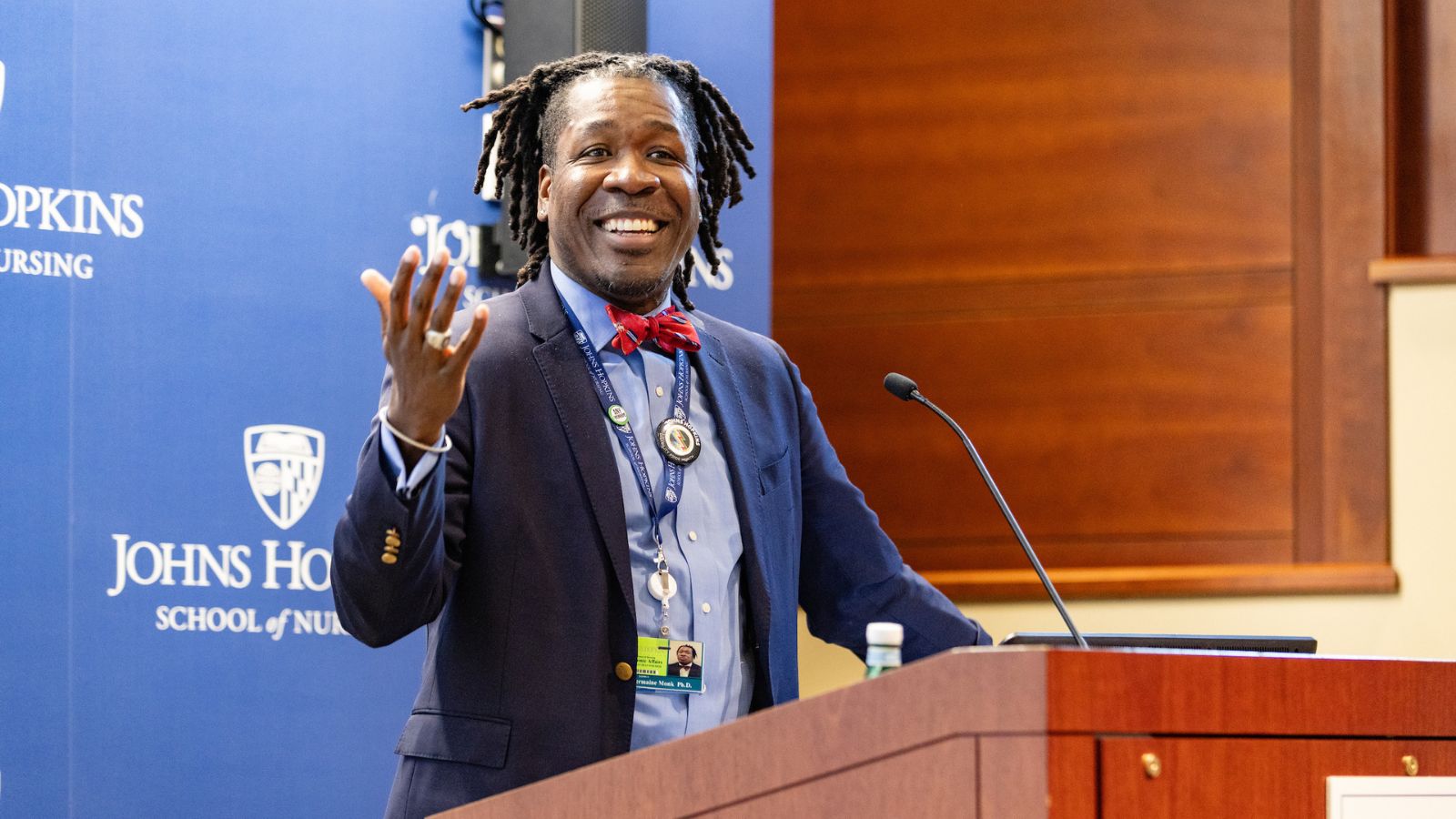By Steve St. Angelo | Photography by Chris Hartlove
Drive to improve care, efficiency, communication yields Capacity Command Center
The first thing you notice about the brand-new Johns Hopkins Hospital Capacity Command Center is its location: steps from the main entrance at North Wolfe Street. Next is its footprint: 5,500 square feet. That is prime real estate at one of the nation’s very best hospitals.

Then, when you step beyond a wall of opaque windows and into the center, which controls just under 700 beds and tracks which patient goes where and (ideally) for how long, what’s striking is the sense of calm. That’s because calm was built in from the start. And nursing’s fingerprints are all over it.
“The story here was that this was nurse-led,” insists Scott Newton, DNP, RN, standing in the middle of it all looking not unlike a conductor preparing to lead four units in one performance designed
to, among other things, improve communication, expand access for patients from referring hospitals, speed response, and address backups in the emergency room. The four parts: bed management, admitting, the Hopkins Access Line, and Lifeline. Each has its own area and jumbo video screens, but all are designed to blend seamlessly.
Newton, director of nursing for the Emergency Department and Lifeline, already knew a thing or two about making the trains run on time without sacrificing patient care as the head of the hospital’s emergency transport team. And he wanted to bring that approach—“It takes a team” and “colleagues across many disciplines”—to a larger operation. Also like a conductor, Newton knows that without buy-in from key players, he’s just another guy waving his arms.
“Nursing is seen as a convener for quality. That’s pretty high praise,” explains Maryann Fralic, DrPH, RN, FAAN, former vice president of nursing at the hospital and Newton’s adviser at the Johns Hopkins School of Nursing on the capstone project that became the Capacity Command Center. She’s pleasantly surprised at the center’s location (“Oh my gosh, right in the front door”) and size (“I was telling Scott, ‘Space is often more important than money’ ”), but not shocked that Newton was the right glue for the project (“Engaging with others is something that Scott does very well because of his leadership, integrity, and commitment”).

Team builder: From top, Scott Newton with Diana Mahoney, with members of his Lifeline unit,at the Capacity Command Center, and below, with mentor Maryann Fralic at his DNP graduation.
Not one to crow, Newton instead talks about the 10 trips his team made across the country observing and learning from other health care facilities. Then he marches through the center ticking off the thoughtful, creative, and common-sense features born of those efforts. From easy-on-the-feet flooring to louvered ceilings that improve acoustics and enhance sight lines; from stand-or-sit desks that glide up or down at the push of a button to personal lockers in
interlocking “L” shapes that save space and look really cool; to moveable glass walls that shrink or expand meeting rooms based on need; to floor panels that pop up in 18-inch squares so wiring can be added or updated in a flash; to an energy grid that, should one side lose power, allows workers to simply switch desks and keep going; to secure communication lines and a “panic button” that could transform it into a secure fortress in a crisis, the Capacity Command Center is a modern wonder. And all of it is completely accessible, down to a microwave oven at wheelchair level.

Lest you think all this technology might create a barrier between nurses and patients, Newton won’t hear it: “There’s a patient on the other end of each process. … We are advocates for patients and their families.” And hospital staff are welcome and encouraged to stop by, their badges allowing sweep access.
Now that the center is up and running, Newton is asked if there’s a next phase is in his capstone project. “To infinity and beyond,” he jokes, adding that he figures the Capacity Command Center should be operational for at least the next 20 years. The mission, and Newton’s mantra, won’t change. “It’s about getting the right patient in the right bed at the right time.”

 Forging Policy: How Can Doulas Improve Black Maternal Health?
Forging Policy: How Can Doulas Improve Black Maternal Health? Q & A With Forensic Nurse, Michelle Patch
Q & A With Forensic Nurse, Michelle Patch You’re Welcome
You’re Welcome Dr. Robert Atkins, Anna D. Wolf Endowed Professor
Dr. Robert Atkins, Anna D. Wolf Endowed Professor Forging Policy: Associate Dean Jermaine Monk and Education After Affirmative Action
Forging Policy: Associate Dean Jermaine Monk and Education After Affirmative Action






